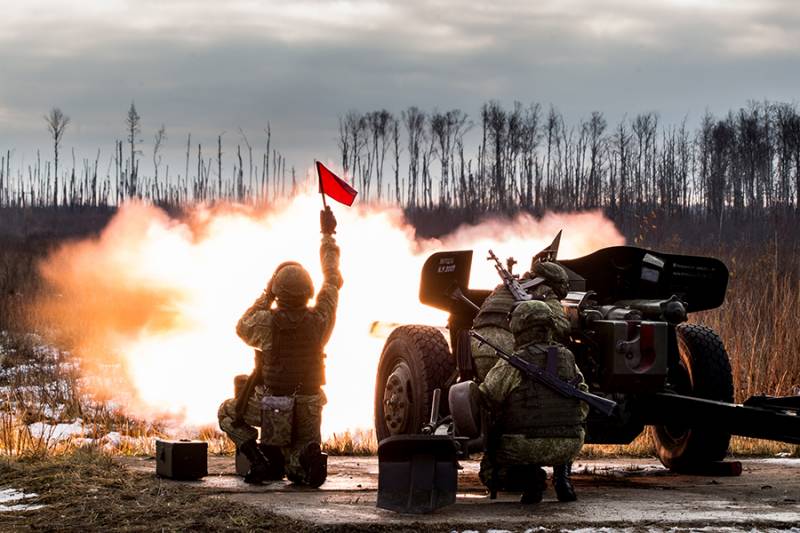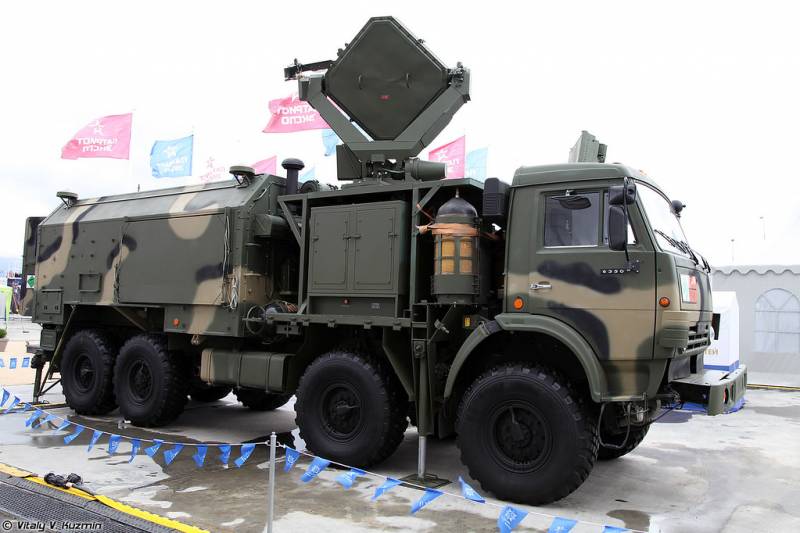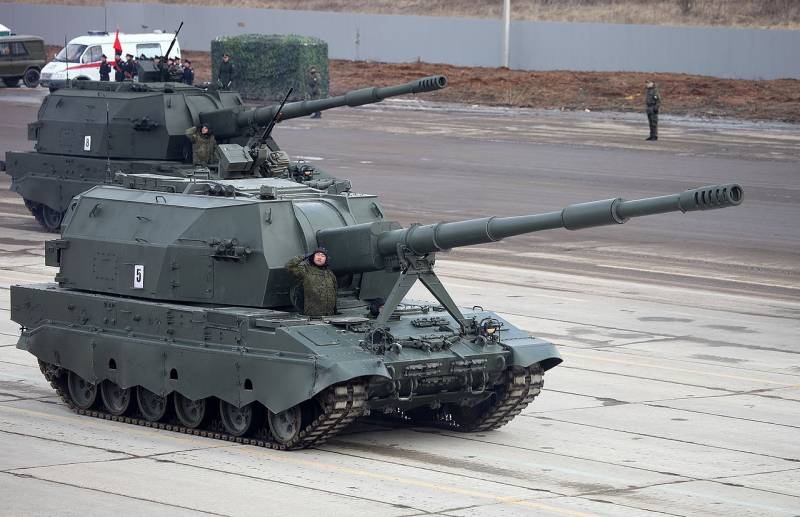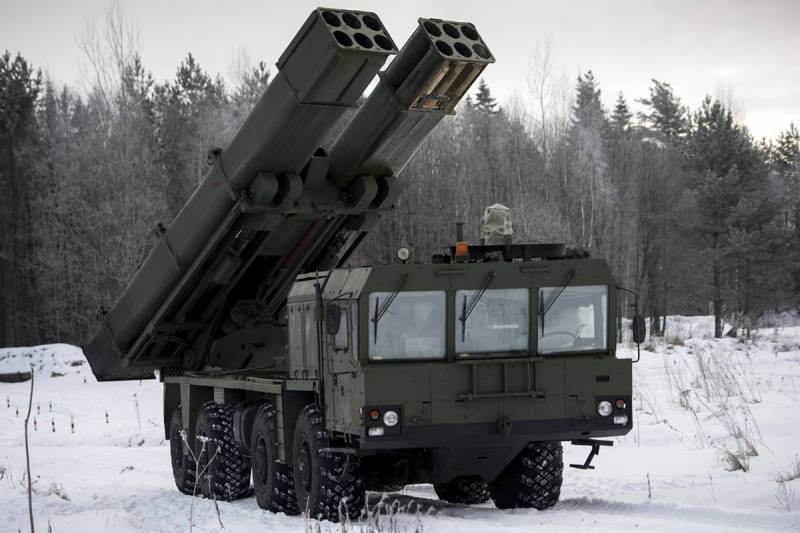Exploration, meteorology and guided projectiles. New tools for artillery
Complete and detailed reconnaissance data are necessary to deliver an accurate and effective strike against an enemy object. Targeting for artillery can be carried out in a variety of ways, including using unmanned aerial vehicles carrying reconnaissance equipment. Such ideas have recently been implemented and tested in practice. To date, the army managed to launch the process of mastering new devices.
According to the domestic press, last year, on the basis of ground forces, tests were carried out on a new unmanned artillery reconnaissance complex and an automated control system based on the Orlan-10 serial UAV. Retaining the main features of the base drone, the new product received a number of special equipment. In particular, small-sized electronic intelligence stations are included in the complex for artillerymen.
Having on board a set of reconnaissance equipment, UAV "Orlan-10" is able to monitor the specified areas and find targets for gunners or missilemen. With the help of an electronic reconnaissance system, the device is able to search for sources of a radio signal, such as command posts, firing positions, communications equipment, counter battery locators, etc. Through an automated control system information about the found object is transmitted to the command post, which, in turn, must manage the subsequent strike.
A characteristic feature of the unmanned artillery reconnaissance complex is the ability to determine the coordinates of the target with high accuracy. In addition, the Orlan-10 allows you to monitor the shooting results in real time and make adjustments. Thus, the duration of firing, ammunition consumption and risks for gunners are significantly reduced when obtaining the desired effectiveness of fire.
At the end of last year, a specialized artillery version of the drone "Orlan-10" was tested in the army. Inspections showed the potential of the intelligence complex, and it was recommended for use. In the autumn of 2017, the first production systems of the new type were transferred to the front lines.
At the beginning of the year, there were reports of the creation of a new reconnaissance tool intended for rocket artillery. GNPP Splav proposed a special 300-mm rocket for the Smerch complex equipped with a special payload. Instead of a warhead of one kind or another, this product should carry a compact unmanned aerial vehicle. The rocket will have to deliver the UAV to the area of work, after which it will be able to self-defense and monitor itself. The characteristics of the prospective intelligence system, unfortunately, were not specified.
In late February, it was reported that the new reconnaissance apparatus for rocket artillery is already ready and waiting for its customer. Later, new messages about the draft of the drone for "Tornado" did not appear. The current state of the project and its prospects are unknown. It can be assumed that such a system can significantly simplify the work of the MLRS calculations.
Another innovation in the field of reconnaissance and fire support means is the interspecific mobile radio direction-finding meteorological complex 1B77 "Ulybka-M". Just a few days ago, one of the artillery units of the Eastern Military District, stationed in Buryatia, received its first system of this type. It is expected that the collection of information on the state of the atmosphere in the shooting area will significantly improve the accuracy and efficiency of fire.
The meteorological complex "Ulybka-M" is a self-propelled car on a wheeled car chassis with a trailer, carrying containers with a set of special equipment. The machine is equipped with a radar station, means of processing and issuing data, as well as communications equipment. For measurements, the complex is equipped with equipment for launching meteorological probes. So, in the respective compartments of the machine and its trailer, about fifty probes and cylinders with light gas are placed to start them. The 1B77 complex can work at any time of the day in a wide range of heights and in different meteorological conditions.
The Ulybka-M mobile radio direction-finding meteorological complex is capable of measuring the temperature of atmospheric air, determining wind direction and speed, atmospheric pressure, visibility range and stability of the surface layer of the atmosphere. It is also possible to measure the so-called. altitude meteorological parameters. The parameters of actual and average wind, density and other characteristics of air at a given height, altitude of clouds, pressure and humidity are determined. Depending on the method of sensing, research is provided at altitudes from 100 m to 30-40 km. The sensing range is up to 150-200 km.
The 1B77 complex is suitable for use in the interests of various types of troops who need up-to-date information on the state of the atmosphere and weather conditions. In particular, data on the high-altitude distribution of atmospheric parameters are necessary for rocket troops and artillery. With such data, gunners can more effectively carry out preparation for shooting and show better results.
Tests of the 1B77 "Smile-M" system began in the 2015 year and took some time. To date, the complex has confirmed all the calculated characteristics, and was recommended for use. In August, a contract was signed for the supply of serial meteorological complexes. The transfer of serial equipment to the troops has already begun.
According to available data, the Russian defense industry is currently working on the creation and introduction of new means capable of increasing the effectiveness of artillery of all classes and types. Such systems, most likely, will appear in the troops along with promising complexes of the latest models. Subsequently, however, we cannot exclude the possibility of upgrading the existing equipment, which includes the installation of such equipment.
Earlier it was reported that a promising self-propelled artillery installation 2С35 "Coalition-SV", equipped with 152-mm gun 2А88, can get some new devices. So, to control the shooting and work with new fuses, so-called can be used. radioball station. Such a radar device will have to track the movement of the projectile along the trajectory and determine the parameters of its parameters. The collected data can be used when adjusting the aiming when shooting. In addition, according to some data, the radio-ballistic station will be able to update the settings of the programmable fuse after the shot.
Another means of increasing the effectiveness of barreled artillery fire should be new ammunition, including with its own guidance systems. Repeatedly reported on the design of adjustable 152-mm projectiles guided according to satellite navigation systems. Unlike some other domestic guided munitions, such products will not need to be accompanied and target designated until they hit the target.
Less bold and innovative, but useful and having a certain potential, is the approach to the creation of shells, involving the use of new materials and explosives, the refinement of the aerodynamics of the projectile, etc. High potential have promising projects of missile charges. All this will have the most noticeable consequences in the context of rearmament. Thus, according to some data, the new ACS “Coalition-SV” will receive eight new shells for various purposes.
It should be noted that the guided artillery shells of several types are already in service and are used together with various guns. The most powerful products of this class are mortar shots of the Brave family, designed for use with the 240-mm mortar 2-4 Tulip. Such ammunition is aimed at a laser-illuminated target. An 134-kg mine carries an 32 kg of explosive and can fly over a distance of more than 9 km. Also created and accepted into service are several other guided projectiles for barreled artillery of smaller calibers.
Guided missiles are being introduced into rocket artillery. Relatively recently, the army began trial operation of a promising Uragan-1M multiple-launch rocket system. This complex will be able to use missiles caliber 220 mm and 300 mm, which will increase its combat potential. According to press reports, guided munitions will be created on the basis of existing missiles for the Hurricane-1M. Increased accuracy and accuracy of fire will positively affect the effectiveness of the combat use of the entire complex.
The development of rocket forces and artillery is not only about creating new guns or multiple rocket launchers. Of great importance is the development of promising ammunition for one purpose or another. In addition, the troops need tactical and meteorological reconnaissance equipment, airborne tracking devices, and interaction with specialized projectiles, etc., to carry out effective artillery strikes.
In recent years, such issues have been given special attention, which leads to the emergence of new systems, complexes and products. Some of these developments have already passed the tests and reached operation in the troops, while other products still remain at the design stage. All such projects have a significant impact on the development of artillery and increase its potential. At the same time, the defense capability of the country as a whole is growing.
On the materials of the sites:
http://ria.ru/
http://rg.ru/
http://vz.ru/
https://defence.ru/
http://otvaga2004.ru/
http://arms-expo.ru/




Information